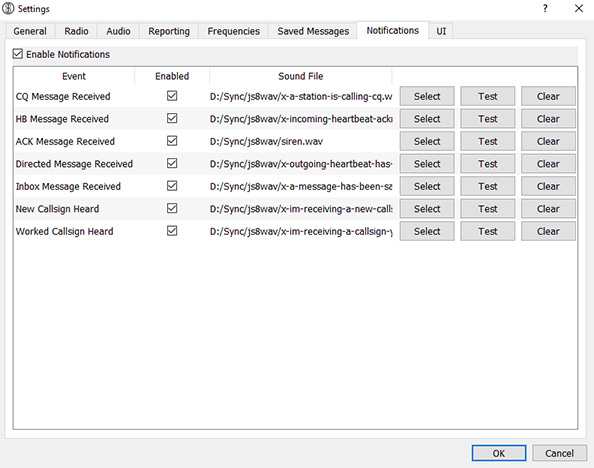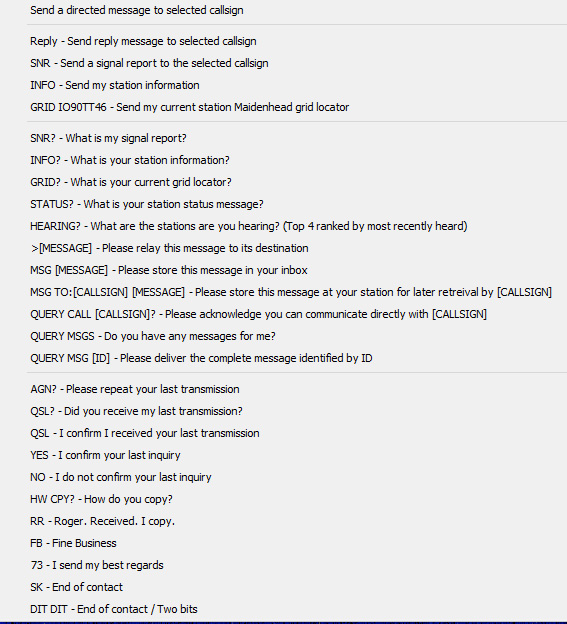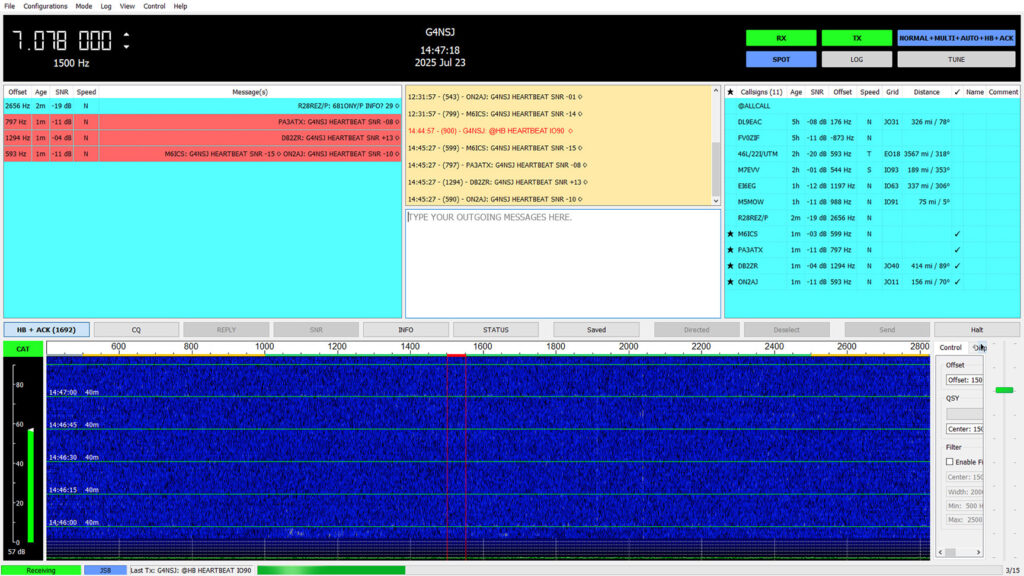Audio Intro. Updated 14/8/25:

JS8 Call software enables amateur radio operators to communicate using weak signal messaging in a keyboard to keyboard format. It was inspired by the FT8 digital mode. It allows conversational exchanges and messaging, unlike FT8, making it suitable for low power operations. I’ve downloaded the JS8 Call program and set it up but I’m only just getting into it so I will add more here soon.
I’ve been trying out the so-called heartbeat mode on 40 metres which transmits my callsign and grid locator at intervals. This lets others know that my station is on the air. They can send me a SNR report, call me direct or maybe send my station a relay command to pass a message to someone they can’t hear. It’s interesting and I’m finding it useful. I switched the gear on at 4am one morning and, running 5 Watts on 40 metres with a 30 metre long doublet, I was decoded on the East Coast and Central North America.
I’ve been having keyboard QSOs on 40 metres with many stations. I’m also transmitting on 1842KHz. I think this mode is going to suit me as I suffer from dreadful QRM on the HF bands at my QTH, making SSB contacts very difficult.
FT8:
If you’re running FT8, your radio and PC are ready to go. All you need to do is download the JS8 Call program and you’re on the air. Give it a try, I think you’ll like it.
Screen Shot. 23/7/25:
You can see how quiet the JS8 section of the 40 metre band is. In fact, all modes on all bands have been dead for several weeks.
The JS8 QSO Party:
The JS8 QSO Party is a chance to get on the air with JS8 and make some contacts every month. Whether you like a quick exchange or a long rag-chew, this event is for you. We have a lot of great, patient operators in the group, so the environment should be very welcoming! The party is an all-day event held monthly on the Second Saturday of the month (unless the schedule is modified for a particular event). Each month will have a theme or goal.
Monthly Theme:
Get on the air and chat with JS8!
When:
24 hours starting at 19:00 UTC on Saturday and ending at 19:00 UTC on Sunday.
Participation:
Global.
Bands:
All Amateur Bands.
Remember, by default, JS8 QSO Party events are not contests, so all amateur bands are open for use. Sticking to the theme is nice, but remember that with JS8 we have the freedom of free-text. So, feel free to QSY toward a clear frequency and talk about anything you want.
JS8 Call Online Group:
You can join the JS8 Call Group here.
JS8 Call Nets:
Surrey Radio Club hold a net on 28.078 MHz using JS8 from 10am Wednesdays. If you know of any other nets, please let me know. [email protected]
JS8 Call Random Words:
In JS8Call, the “random” words and letters you see on the waterfall or in the decode window usually aren’t actually random — they’re failed or partial decodes. Here’s what’s happening:
- Noise and Weak Signals
JS8Call is based on the FT8 modulation scheme, which is very narrowband and sensitive. When signals are weak, distorted, or buried in noise, the decoder may misinterpret them as letters or words that don’t make sense. - Interference
If there are multiple stations transmitting close together on the same frequency, the overlapping signals can cause garbled or nonsense decodes. - Propagation Effects
Multipath, fading, or ionospheric flutter can distort parts of the signal, leading to fragmentary or corrupted text. - Error Correction Limits
JS8Call uses forward error correction (FEC), but if the signal is too degraded, the decoder can’t fully correct the errors. Instead of discarding everything, it sometimes outputs “random” characters that were most likely to match the corrupted symbols.
JS8 Notifications:
The table below shows the available notifications. However, it can be confusing. In the lefthand column, where it says, ‘direct message received’, this actually means that your outgoing heartbeat has been acknowledged. Where it says, ‘HB message received’, this means that you have acknowledged an incoming heartbeat.

CQ message received = A station is calling CQ.
HB message received = You have acknowledged an incoming heartbeat.
ACK message received = ?
Direct message received = Your outgoing heartbeat has been acknowledged.
Inbox messaged received = A message has been sent to your inbox.
New callsign heard = You’re receiving a callsign you’ve not heard before.
Worked callsign heard = You’re receiving a callsign you’ve worked before.
JS8 Call frequencies:
| Band |
Frequency | |
| 160 | 1.842 | |
| 80 | 3.578 | |
| 60 | —— | |
| 40 | 7.078 | |
| 30 | 10.130 | |
| 20 | 14.078 | |
| 17 | 18.104 | |
| 15 | 21.078 | |
| 12 | 24.922 | |
| 10 | 28.078 | |
| 6 | 50.318 |
S Points to SNR chart:
| S POINTS | SNR | |
| S1 | –48 dB | |
| S2 | –42 dB | |
| S3 | –36 dB | |
| S4 | –30 dB | |
| S5 | –24 dB | |
| S6 | –18 dB | |
| S7 | –12 dB | |
| S8 | –6 dB | |
| S9 | 0 dB | |
| S9+10 | 10 dB | |
| S9+20 | 20 dB | |
| S9+30 | 30 dB | |
| S9+40 | 40 dB | |
| S9+50 | 50 dB | |
| S9+60 | 60 dB |
JS8 Messages:


